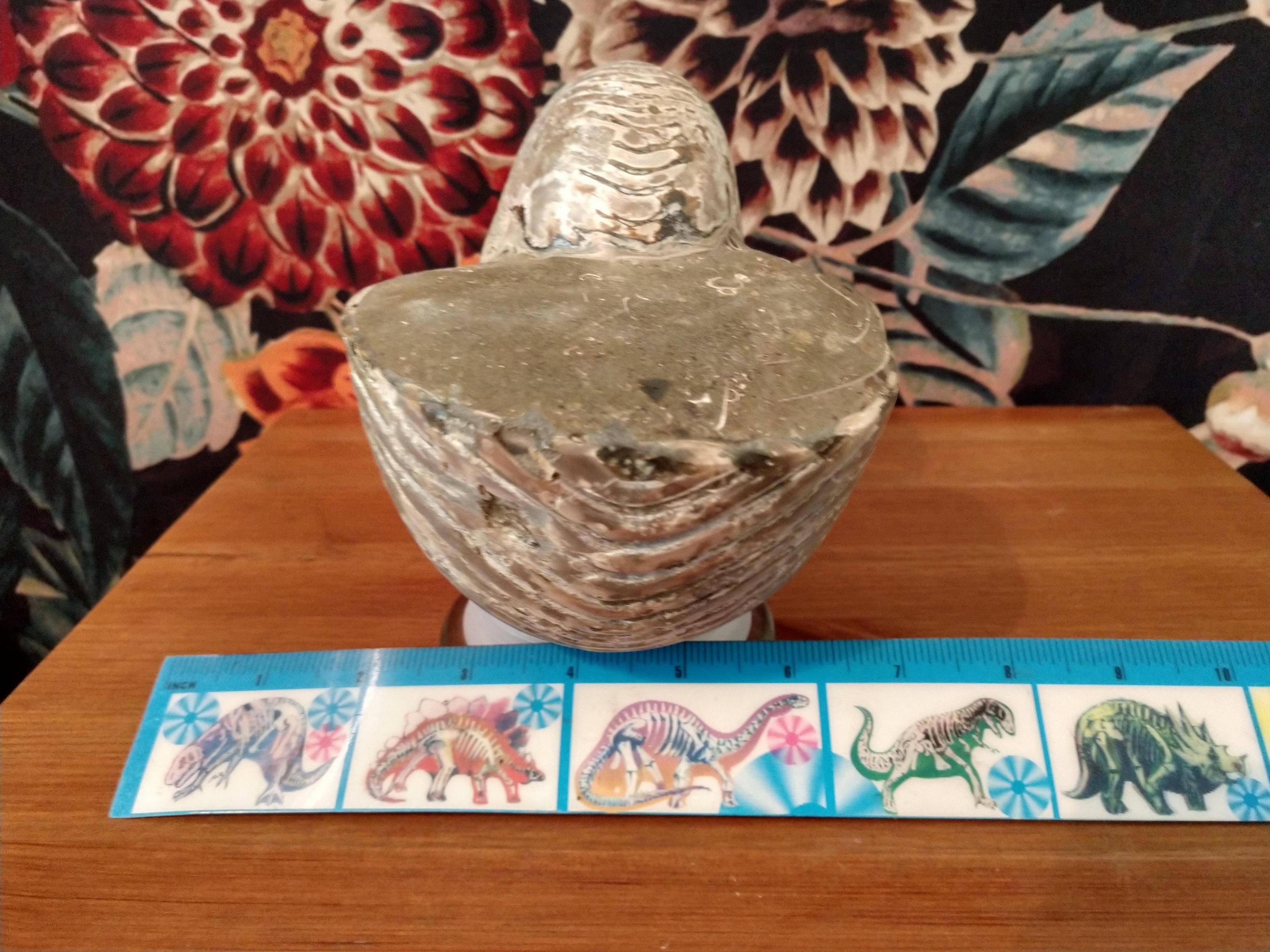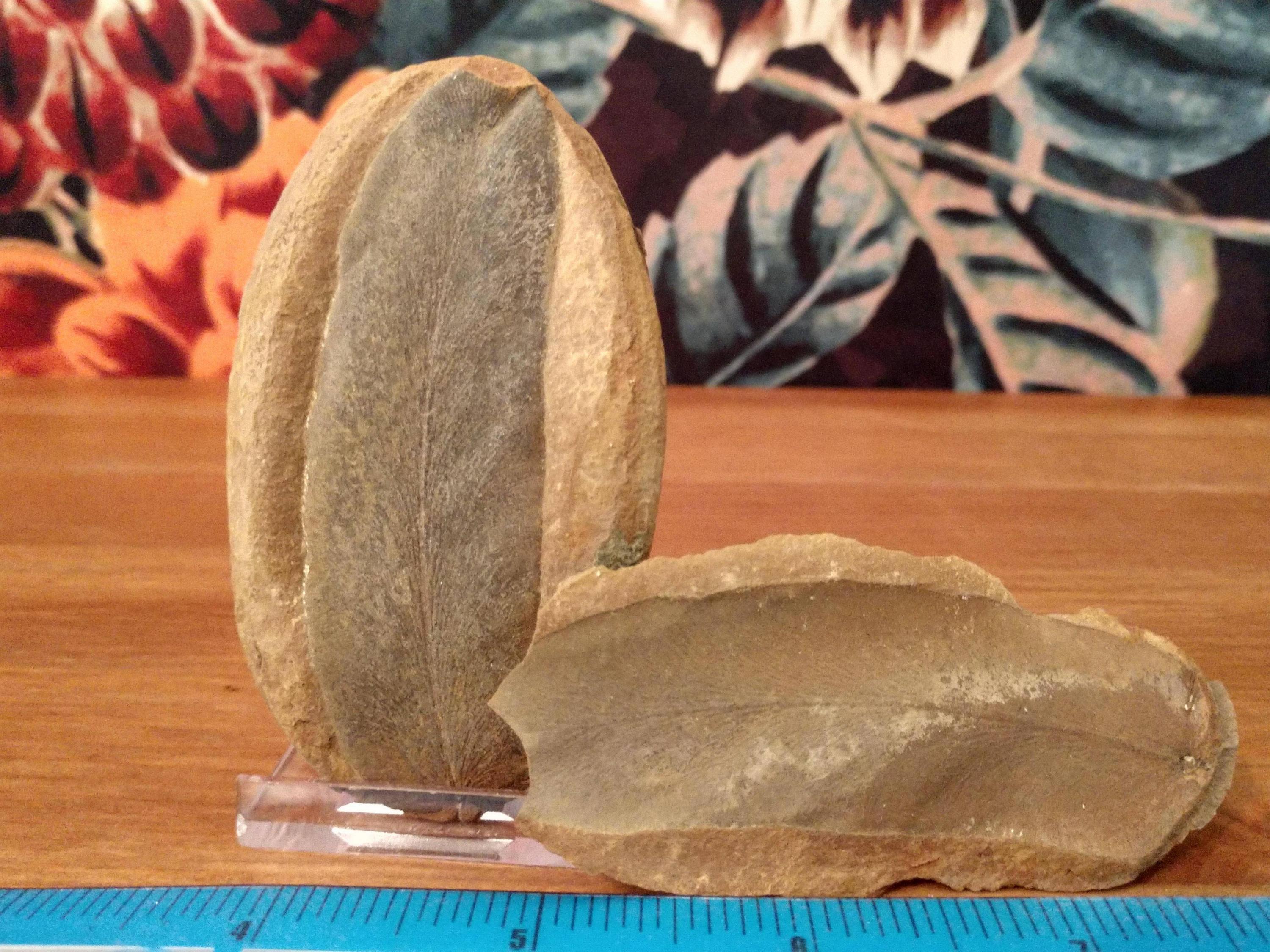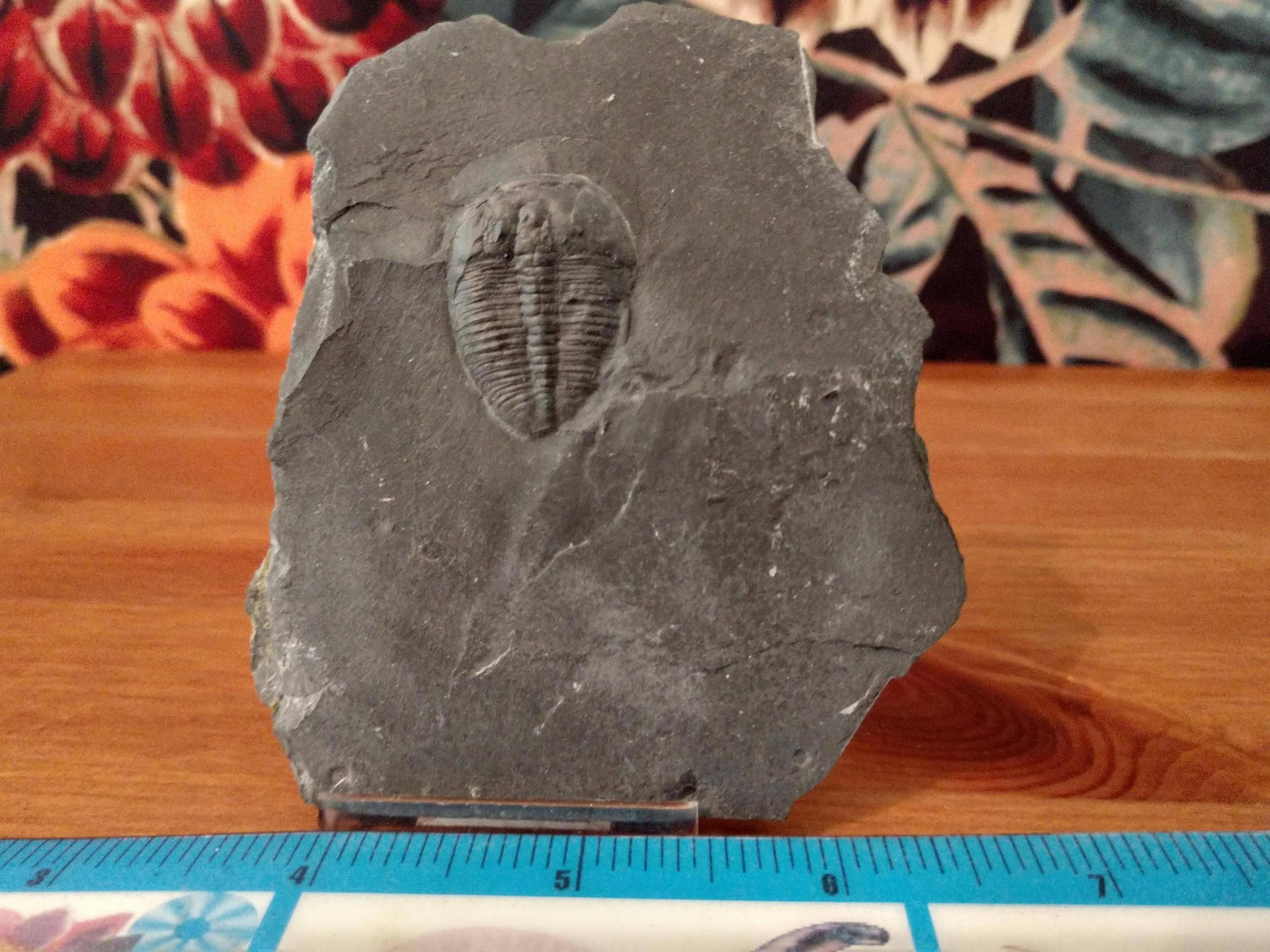Dinos91
886
38
5

Nautilus fossil
Species: Nautilidae
Late Jurassic - 160 Million years
These were swimming around while the dinosaurs had fully taken over the landscape, including theropods and large sauropods

Another view of the Nautilus. This fossil weighs around 5 pounds at least

Oyster fossil
Species: Rastellum carinatum
Late Jurassic - 160 Million years

Another view of the oyster to give you a better idea of the odd shape of this species

Shark vertebra
Species: possibly Otodus
Eocene - 54 Million years
This specimen is from a out 10 million years after the extinction of the dinosaurs, during the rise of mammals and birds.

Fish fossil
Species: Knightia eocaena
Eocene - 48 million years

Closer picture of the Knightia fossil to show some of the details on the fossil

Horse tooth
Species: Equus
Pleistocene - less than 2 million years old

View of the top of the horse tooth, this ground up grasses before the dawn of man.

Plant fossil
Species: unidentified, assorted
Carboniferous - 300 million years
These were growing at the same time that giant dragon flies and centipedes that were meters long made their way through ancient forests.

Shrimp fossil
Species: Carpopenaeus callirostris
Cretaceous - 95 Million years
This little guy was swimming around while giants like the sauropod Argentinosaurus were shaking the landscape.

Plant fossil
Species: Macroneuropteris
Carboniferous - 300 million years
This specimen is a positive fossil and the negative imprint on the surrounding matrix. Like 2 for 1!

Trilobite Fossil
Species: Elrathia kingii
Middle Cambrian - 505 million years
This is my oldest fossil, and one of the most easily recognizable. These little guys were scurrying around the ocean floor with hundreds of other trilobite species during the middle cambrian period. This was the first time multicellular life really spread on Earth. This sudden evolution is known as the Cambrian Explosion and resulted in a vast array of multicellular life like anemone like crinoids and other invertebrates.

Flora fossil
Species: Sphenopteris & Mariopteris
Carboniferous - 300 million years
This is my largest fossil, two different plants from the Carboniferous period. Like my other Carboniferous fossils, these were growing in a time where giant insects had taken over terrestrial niches and were able to grow to such sizes due to a huge increase in atmospheric oxygen due to the eruption of plant life on land. This is one of my favorite time periods to think about, with thick forests carpeted with ferns, and dragonflies larger than chickens flying around. It's such an alien landscape compared to today.
Xerubay
Your collection is awesome and I love it! Thanks for posting about it!
GhostTater
Hmm, I see. You must be from North Carolina.
Usernamecheckedout1
OMG THANK YOU!!!! I’m the one who asked you to post this btw lol
TheWorldIsATollFreeToilet
So awesome! Love your timeline thingy too
MelodiousDissonance
Whoot!
GunLovingTreeHugger
YAY!! FOSSILS!! These are so cool! Thank you for showing us.
DreamerMassacre
The dinosaur ruler is acceptable only this once. Otherwise it needs to be a fossilized banana
Dinos91
If only there were readily available banana fossils
pistacher
Neat. That's not just any horse btw, it's a three toe-d horse that went extinct before the Spanish re-colonized with the horses we know now!
goudist
There were plenty of horse species with hooves in North America that went extinct before the spanish. Same Genus different species:
goudist
https://en.m.wikipedia.org/wiki/Hagerman_horse
NOYFBAH
Ive got a toe bone from one of these. Kind of cool
Dinos91
That's awesome! I wasn't sure which horse species it was, the info I got on it was just "Equus" TIL
goudist
The label was probably correct. Could be Equus lambei, Equus simplicidens, or others. There were plenty of species of wild horses in NA.